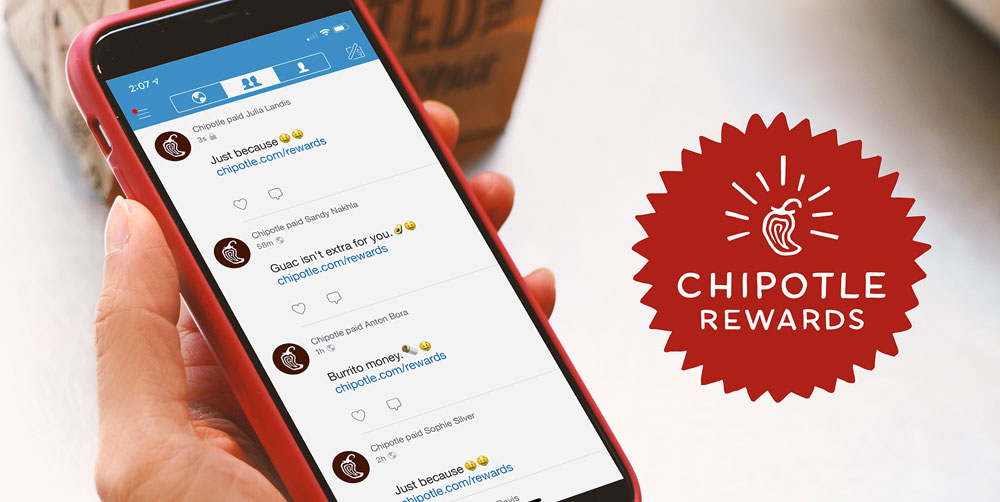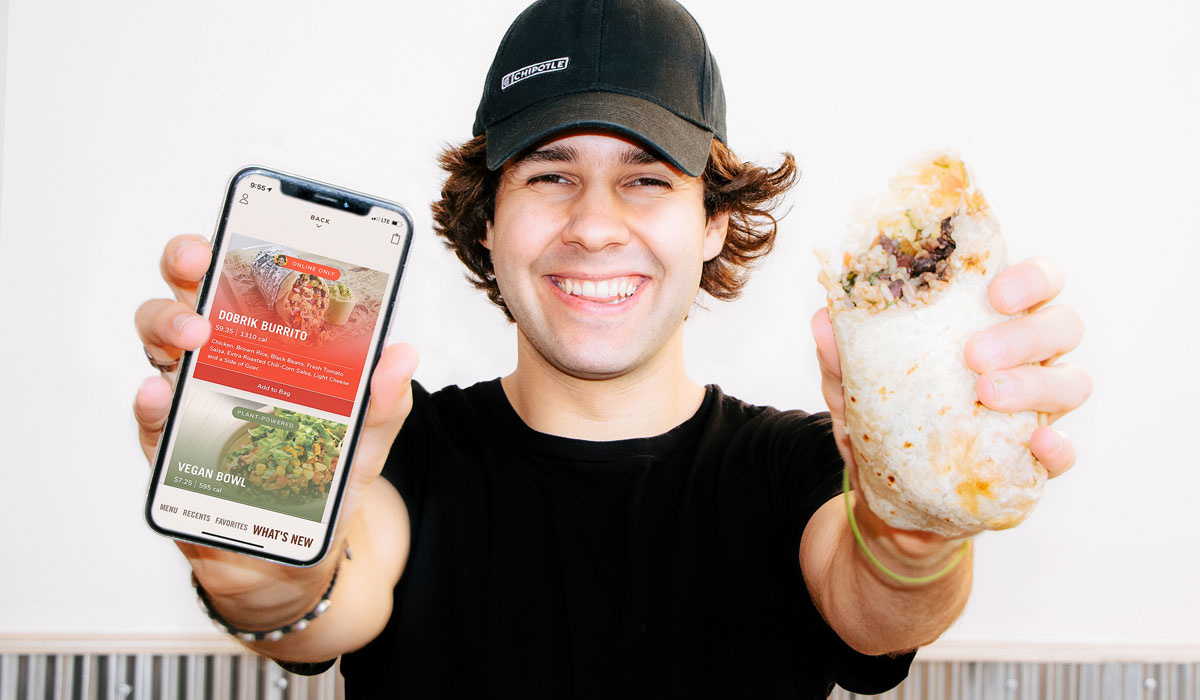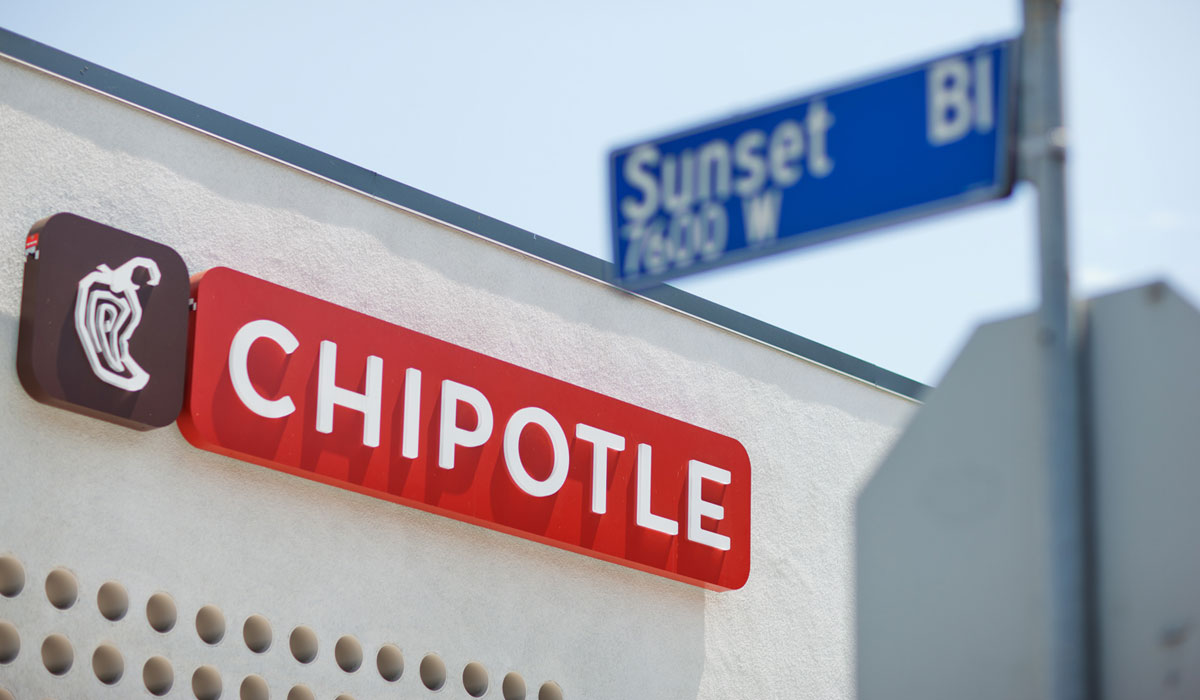It would be fair to say, as chief executive Brian Niccol did Wednesday afternoon, that Chipotle’s reinvigoration has taken many forms. More visible marketing. Better operations. Food-safety training, stage-gate testing, and increased attention to throughput and access points. Yet it’s hard to rival what’s unfolding in Chipotle’s digital ecosystem.
The fast casual crushed Wall Street expectations in the first quarter of fiscal 2019 with same-store sales of 9.9 percent—Chipotle’s fifth consecutive quarter of accelerating comps. Equally impressive, the figure included 5.8 percent transaction growth. Restaurant-level margins were 21 percent, 150 basis points higher than last year. Adjusted diluted earnings per share came in at $3.40, representing 60 percent year-over-year growth. Revenue jumped 13.9 percent to $1.39 billion.
READ MORE: Chipotle’s new CDO says there’s room to grow.
But here’s the headliner: Chipotle’s digital sales boomed 100.7 percent versus the comparable period, up to 15.7 percent of total sales for the quarter. That’s also a significant leap from the 12.9 percent mix in Q4. Digital sales totaled $206 million in the quarter as the brand averaged more than a million digital transactions per week.

There are a few areas to unpack. To start, Chipotle launched its long-awaited rewards platform on March 12. Niccol said the chain already enrolled 3 million members. And Chipotle is still in the early stages of gathering data that can be used to more efficiently target customers to engage and grow their loyalty. Currently, guests earn 10 points for every dollar spent and receive a free entrée after accruing 1,250 points, with periodic bonus offers. The real personalization is just beginning.
“The rewards program gives us a currency that we can use to incent behaviors and is a key part of our digital system flywheel,” Niccol said.
The program will provide topspin to Chipotle’s digital system, in time. In other terms, the direct impact won’t show for a bit. In Q1, in fact, the chain absorbed a 30-basis point negative hit as a result of deferred revenue from the platform in its same-store sales.
“We’re just getting started with using that information to then smartly market to those individuals,” Niccol said of the data.
Over the next year, he added, Chipotle will keep building enrollment. As it does, it will have a bigger universe to create programs to incentivize behaviors and, in theory, change customer behaviors associated with it. Chipotle’s targeted marketing has ample room to grow.
What Chipotle could do through offers and other features specific to a guest’s behavior, Niccol said, is turn light users into medium ones, and non-users into light guests. “We haven’t had a chance to market with these folks on a couple-of-month basis yet,” he said. “It’s really early, but I think the positive is we’ve got a lot of evidence that consumers want to be a part of it and we’ve had evidence in our test markets that when we use the data smartly with them, we do see behavioral chances that result in a positive outcome for our sales growth.”

A more mature sales driver for Chipotle is delivery. Niccol said the chain completed the addition of mobile order pickup shelves in all relevant restaurants this past quarter. The self-service stations are a key element in digitizing and modernizing Chipotle’s restaurant experience. In addition to making it easier and more attractive for pick-up guests to order ahead and grab their food, it’s also making Chipotle a popular destination for third-party delivery drivers, Niccol said.
“The delivery driver no longer waits for orders when they enter our restaurant, they simply go straight to the shelf, select the appropriate order and head off to the delivery destination,” he said. “We feel this is a competitive advantage and allows us to have industry-leading delivery times.”
And then there are the digital make-lines, which are now in about 1,300 units, with complete rollout planned by year’s end. Niccol said early results show locations with both features generate digital sales above the company’s national average. There are some units touching 30 percent of sales for digital.
“In our view, this intense focus on improving digital access has been a core pillar of the brands’ success. We expect digital sales mix to continue to improve for the foreseeable future as the company increases the number of locations with a digitized second make line, adoption of loyalty grows, and delivery expands,” BTIG analyst Peter Saleh wrote in a Thursday note.
Niccol said Chipotle has also seen very little guest overlap between its own in-app delivery and the company’s third-party delivery partner apps. “They’re proving to be two different occasions,” he said.
The goal from launch has been to remove obstacles, whether that’s in the app, web, or pick-up experience. Removing friction so deliveries are as efficient as possible. Chipotle relaunched its website in February, which is helping increase customer conversion, the company said.
Jack Hartung, Chipotle’s CFO, said the company believes at least two-thirds of delivery is currently incremental. Chipotle takes the cost as a separate business. When you view the whole P&L of delivery together, he noted, Chipotle is generating net incremental margins north of 21 percent.
Delivery times have tracked under 30 minutes, Niccol added.
“As we have stated, we believe digital transactions will help drive margin expansion for Chipotle as all digital transactions are executed on the more labor-efficient second-make line. We believe evidence of this dynamic was demonstrated by the labor leverage [110 basis points] achieved this quarter, despite mid-single digit wage inflation and modest pricing,” Saleh added.
On another accessibility note, stores with “Chipotlanes—the brand’s pick-up windows for mobile orders—will continue to open and the test will ramp up later in the year. “These restaurants are a great extension of our digital system as they help increase convenience and access to Chipotle for customers looking to pick up digital orders without getting out of their cars,” Niccol said.

Back in the conversation
This past quarter, Chipotle’s digital impressions increased 300 percent, year-over-year. Social impressions rose 400 percent. That provides a clear window into why Niccol felt Chipotle was “invisible” when he took over the role. The quick jump shows how much runway the brand had in regards to improving its message. Last fall, Chipotle launched its “For Real” advertising campaign, which focused on the chain’s ingredients and cooking techniques. It followed with the “Behind the Foil” campaign in February that showcased what a real Chipotle kitchen looks like on a daily basis.
“Chipotle has always believed that there is a connection between how food is raised and prepared to how it tastes,” Niccol said. “And what I love most about these commercials is there was no studio, no script, no props and no actors. It was just our employees doing what they do best, which is making delicious food.”
And then Chipotle borrowed a page from Niccol’s previous stop—Taco Bell—by trying to play a role in the cultural landscape. On January 2, the chain unveiled its first digital-only menu innovation, Lifestyle Bowls. Like Taco Bell often does, this was a menu innovation born out of presentation, not new products. Chipotle designed Keto, Paleo, Whole30, and double protein options that were essentially just redesigned versions of its current ingredients. Launching after the New Year, they were put right in the healthier consumer’s path as diets and other resolutions took hold.
Niccol said during the first few days of launch the platform generated more than a billion earned media impressions. Later in the quarter, Chipotle extended the program with plant-powered options. These, again, highlighted core equities Chipotle wasn’t spotlighting before—sofritas and vegetarian bowls. It didn’t drive complexity into the system.
Chipotle also launched a free delivery bowl offer from December 17 to January 7 that helped expand access and attract new guests to its app and delivery capabilities, Niccol said. Nearly half of the guests taking part in the offer were new or lapsed users, he added. “And we are seeing increased new customer retention with higher levels of delivery sales after the promotion,” Niccol said.
Chipotle’s media plan currently is a holistic one, with national TV advertising on culturally relevant programming, like the NCAA basketball tournament, and on social media. Marketing and promo costs were 2.5 percent in the quarter, an increase of about 70 basis points compared to last year. Chipotle expects to increase that investment to about 3.5 percent in Q2, Hartung said.
Operations and labor, and improvement in both
Niccol said Chipotle experienced “a solid reduction in overall turnover measures in Q1.” He credited better leadership training, providing a clear direction on career progression, and benefits as illustrated by Chipotle’s enhanced tuition assistance program.
The company is now executing line tastings and leveraging chef-driven cooking demonstrations to improve the quality of its food, Niccol added. A guest experience survey, he said, proved the efforts paid off.
“What we see in customer satisfaction surveys is people are commenting on how great the food tastes again. And I think that is a testament to a couple of things. You don’t end up with great food unless you get through the line quickly; you don’t end up with great food unless the people make the food correctly,” Niccol said. “And you don’t end up with great food if, when you sit down and go to eat your food, it’s not in a great environment.”
Chipotle opened 15 new restaurants in the quarter to bring its total total count to 2,504.






